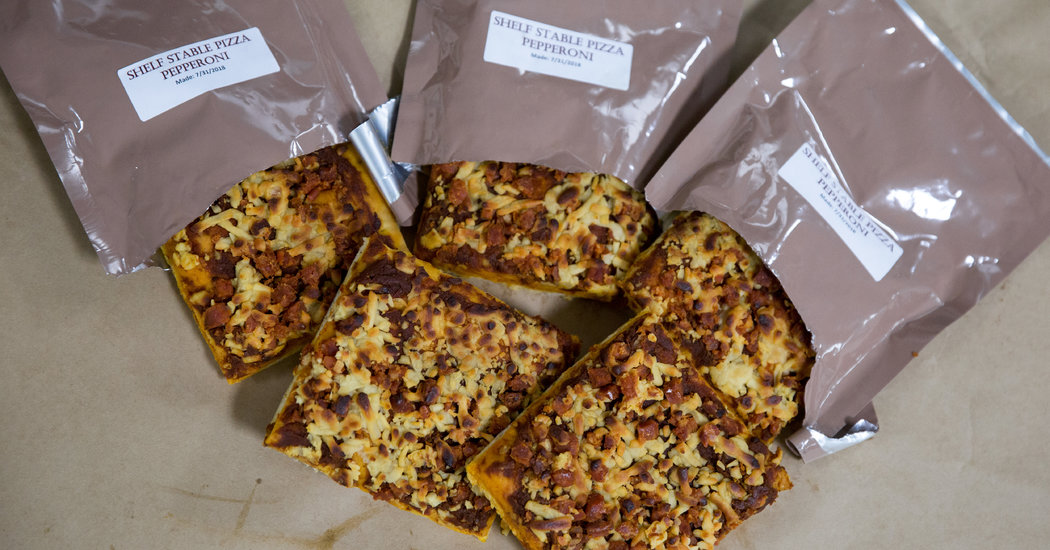
The food scientists kept tweaking the pizza’s cheese, bread and sauce until they all had the same level of moisture and the same pH, so they would not interact and spoil. And to fight oxidation, the team added a small sachet of iron filings to the sealed pouch, which will bind any free oxygen.
When they had a slice that could remain stable for six months in storage at 100 degrees Fahrenheit, it was time for a taste test.
“It scored pretty well,” Ms. Richardson said. “On our scale it got a seven. Nine is the highest. I think M&M’s get an eight.”
The slice was put into production, and it will debut in the field this year as M.R.E. No. 23, packed in a tan bag along with blueberry cobbler, a powdered chocolate protein drink, an oatmeal cookie, and Italian breadsticks with jalapeño cheese spread.
So how does the pizza taste, really?
Only a few troops have had a chance to try a slice yet, but it is already possible for civilians to obtain pizza M.R.E.’s online, and a surprising number of military buffs and field-ration fanatics have posted YouTube videos of tastings. Their ratings average out to “not bad,” with several comparisons to school-cafeteria pizza.
“You have to remember, these were designed to be eaten when you are wet, cold and hungry,” said a spokesman for the Combat Feeding Directorate, David Accetta. “They taste better then.”
For an independent expert’s opinion, The New York Times turned to Jeff Pond, the chef at Area Four, one of the top rated artisanal pizzerias in Boston. In a kitchen where dough from a 14-year-old sourdough starter was being dressed with pistachio pesto and wilted Swiss chard, the field ration was presented to Mr. Pond on a plate.




